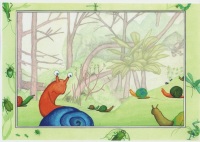It’s time for another group posting of the Insecure Writer’s Support Group! Time to release our fears to the world or offer encouragement to those who are feeling neurotic. If you’d like to join us, click on the tab above and sign up. We post on the first Wednesday of every month. Every month, the organizers announce a question that members can answer in their IWSG Day post. Remember, the question is optional!!! Let’s rock the neurotic writing world!
Our Twitter handle is @TheIWSG and the hashtag is #IWSG.
May 1 question – How do you deal with distractions when you are writing? Do they derail you?
It’s changed a lot over the years. If you’d asked me forty years ago, I would have said yes distractions derail me big-time, and I lose my rag at friends and family because everyone/thing is barking for my attention when all I want to do is write. When I was young, I had a low threshold of patience for disruptions. Story writing was something I was “trying” to do, to learn, to understand, and it required a great deal of concentration. There was a deep longing for solitude and quiet – if only I could get things quiet enough, I might have been able to hear the muse, and I might have been able to produce a work of near genius. But I couldn’t go away far enough or attain enough peace of mind to get fully underway with my writing.
So what did I crave? More distance, more peace. It’s like that old yearning for the quiet mountaintop or being able to retreat into the wilderness for perfect serenity that can never be filled. You can take holidays, stay in the country for years, and escape from everyday life for periods that never seem long enough. You eventually find your still center, and the words flow. But, it can never last. Sooner or later, you have to go back to your life.
Looking back on that early period, I realize now that I was still young, a person undergoing construction, with elements of my personality and belief system that had yet to coalesce into any kind of sense. To write fiction, I had to travel out of town and stay by the seaside for extended periods of solitude and find myself before I could work. Just having a person enter the room when I was writing was enough to break my flow. My link with the craft was flimsy. Tenuous.
But as I say, it’s changed a lot over the years. If you ask me that question today, I would say I’m no longer as easily distracted.
The older I get, the less I need my environment to be a certain way, and the less I need to leave town or ‘retreat’ to produce the copy. My workstation is at the kitchen table. I live here with my two grown-up sons in a small house. The boys have friends over, and there is constant music and chatter. Sometimes, I’ll be sitting at my computer working with a crowd of teenagers two steps away from me playing Mario Kart on the Nintendo in the living room, and my middle son sitting six steps away from me watching WWE (wrestling) at top volume on his tablet. It’s a constant barrage of babbling, boisterous, bombast, and coming at me in surround sound. I have learned how to zoom in with more focus on my story and close the mayhem out of my mind. I ignore them. A cone of silence drops.
The result, the work gets done. And I don’t have to spend a fortune and hightail into the countryside. There are so many blessings about getting older. I am happy to say that in my old age, I’m discovering the truth, that there is nowhere to rush to, nothing to change. I can write wherever I am, no matter what else is going on. My old age has taught me I’m not in charge. The stories come from the muse, the ether, ‘the inspired whatevers’ as my dear friend Meg used to say and percolate through my mind, my life, my gathered knowledge and experiences and understanding, and all I have to do – as Julian Fellowes once famously put it – (is) “let the words trickle out.”
Sit at my desk. That’s what I’ve learned after 40+ years of writing. Show up.
Then you can write – even with noisome boys near and in your ear.
How do you cope with all the distractions of modern life?
Talk to you later.
Keep Writing!
Yvette Carol
*
“Within you, there is a stillness and a sanctuary to which YOU can retreat at any time and find peace.” – Hesse
*
Subscribe to my newsletter by emailing me with “Newsletter Subscription” in the subject line.
*
I know I’ve mentioned this story from my past before, but it bears repeating here. That of a run-in I had with one of my first writing tutors, Maria Stuttard, where she asked me at one point, “How old are you?”
I responded, “Seventeen.”
Maria said, “My advice to you is to put down your pen.”
I was aghast. What?
She went on. “Go out, live your life, pack into it everything you possibly can, and then come back to your desk and write.”
There was no way I could stop writing stories – it was my form of stress release. But, I did ‘go out into the world and live my life.’ My storywriting continued in the background of my adult life and has been my ongoing hobby for more than forty years.
What I see now is that Maria was right. To write well for the erudition of others, an author has to have lived. At our Fabulatores writing group today, the girls and I were saying that we use tidbits from our whole lives in every story, snippets of conversation, turns of phrase, personality quirks, funny and or distressing situations, stories we have heard, things we have witnessed – that we draw on this rich reservoir when we write fiction. Maria was right. I regret doubting her, as the older I get the more I feel I have to offer my writing.



























































